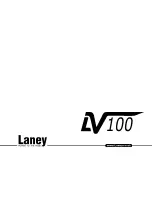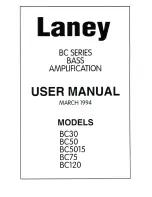
VHD5 Rigging Manual ·
VHD5 Internal Rigging
VHD5 R
igging M
anual ·
VHD5 I
nt
ernal R
igging · F
ly B
ar Deplo
ymen
t
10
VHD5 Internal Rigging
Each VHD5.0 and VHD8.10 cabinet has its own internal flyware. It consists of a hinged rigging bar with a small external
silver handle located at the top of each cabinet, a push pin attached by a wire harness for locking the rigging bar into place,
and corresponding holes at the base of each cabinet with a push pin attached by a wire harness for connecting adjacent cabinets.
When the handle is rotated, the bar protrudes vertically from the top of the cabinet and fits neatly into a slot in the flybar,
or into the cabinet above. The two locking push-pins are employed, one to lock the rigging bar in the upright position,
and the second to secure the flybar or two cabinets together.
Fly Bar Deployment
1. Remove the fly bar transit-case lid and position the case so it is sitting directly under the 2 chain motors.
2. Attach the 2 rated shackles to the top (rotating) flybar and lock the pins with Heavy Duty cable-ties.
3. Lower the chain motor hooks to the top fly bar and attach the chain-motor hooks to the flybar shackles,
(or steel extension cables).
These chain motors should be rated at a minimum of 1 tonne each, and should be rigged with the centre
of the motors 1 metre apart.
IMPORTANT!
It is very important that the integrated flybar motor is in its 'parked' position. Otherwise the flybar is placed under
considerable strain, and the flying process becomes a lot slower.
NOTE:
If the main flybar is NOT in the parked position at the commencement of the system setup, it may be necessary to
connect the tilt flybar control cable and power on the amplifier rack at the beginning of this process, in order to place
the main flybar in the park position and ensure that the system is hanging vertically during the setup process. When
disassembling system it is important to place the main tilt flybar in the PARKED position before disconnecting the flybar
power. This will ensure it is the correct position the next time it is deployed.





































